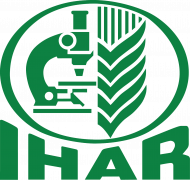Abstract
Water and nitrogen (N) management is a key factor in starch potato (Solanum tuberosum L.) production to ensure good yield and quality. Due to its shallow root system, potato is sensitive to drought and N uptake is limited to the upper soil layer resulting in leaching of nitrate. Efficient utilization of N and water can be optimized by adaptation of the cropping system and by selection of improved genotypes. A 2-year pot experiment with 14 modern starch and 3 table potato cultivars was conducted under controlled conditions in a rain-out shelter in order to investigate genotype-dependent responses to N deficiency and drought stress with regard to yield and yield components. Plants were grown at two N levels and a short-term drought-stress period during the sensitive tuber initiation stage was applied. Starch yield under control condition reached an average of 80.2 g plant−1, which was reduced under drought stress by 18% at sufficient N supply and by 23% at N deficiency. Sufficient N fertilization improved the water use efficiency under both continuous water supply and drought stress. N limitation increased the N use efficiency (NUE) at continuous watering, while NUE was not affected by drought stress at sufficient N supply but decreased under N deficiency. Genotype and drought as well as genotype and N level interactions were significant for all investigated traits, i.e. tuber yield (fresh and dry matter), starch and NKjeldahl contents, starch yield and water consumption.















